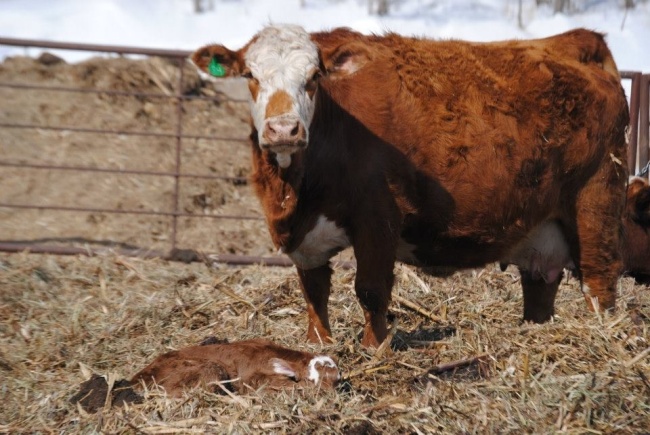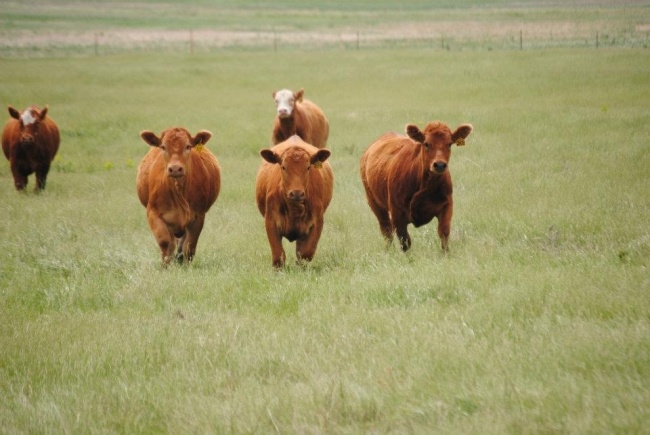Recently it was brought to my attention that there is a lot of misunderstanding about how our cattle get from the farm to the plate, so I thought I would give a quick rundown of the actual time frame that our cows spend on the farm.
Let me start by saying that I’m not claiming that this is how ALL cows are raised, but for the most part, most farms/ranches follow a similar calendar, depending on location, management styles, etc. But this will go a long way to explaining how MY farm works.
Here we go:
To start with, our cows are bred to have their calves from the second week of February to the beginning of April or so. The reason being that our lots handle snow and ice better than mud and water. I’ve talked about that many times before, so I won’t bore you with the details. But be sure to check out some of my calving posts!
We breed our cows for the next year in May. Then, shortly after being bred, they head to pasture where they stay until close to winter, or if the grass in the pasture deteriorates enough to warrant them being brought closer to home.
That’s right. Our cows spend a majority of their year out in the prairie…on green grass, left to their own devices. But that’s not what you hear from animal right’s activists, is it?
Even when our cattle are brought home, we tend to move them to a field of corn stalks or something similar to graze, instead of bringing them in our calving lots. It helps the cows to keep moving throughout their gestational period, and it provides natural fertilizer and helps break down the crop left in the field.
In average year, our cattle will come home to be fed twice a day starting in December or January…just one month or so shy of calving.
And those calves that are leaving the farm to get to the plate? They follow a similar schedule, but are fed a little sooner, making sure that they are the healthiest they can be prior to going to a finishing operation. Generally, our cattle leaving for food production weigh about 900 to 1,000 pounds. Cattle ready for slaughter are usually about 1,200 pounds or so.
What does that mean? It means that our cattle do not end up spending a lot of time at a finishing lot gaining weight for slaughter.
Our cattle are not considered “grass-fed,” even thought that IS what makes up a good portion of their diet. And that goes the same for a majority of beef raised for your plate.



クロックス 通販 激安
Pingback: The definition of disaster | Wag'n Tales
Pingback: The Voice of Agriculture - American Farm Bureau
What’s up, always i used to check weblog posts here early in the daylight, since i like
to find out more and more.
For most up-to-date information you have to pay a visit world
wide web and on the web I found this web site as a most excellent
web site for most recent updates.
If you desire to grow your know-how simply keep visiting
this site and be updated with the newest news update
posted here.
You can monitor your sleep cycle by insserting the fitness gadget in the sleep
band and strapping it onhto your wrist.
I understand you’re trying to come across as doing better for the animals and I’m pretty sure the animals enjoy living a more blessed life than the ones in factories, but if you’re goal is to take care of the animals then why are you still taking their life? I know many people have farmed animals for most of their lives and they’ve probably grown to love their animals. But those same people that have love for the animals will sell them for slaughtering or kill them, theirselves. Maybe my thought process is because I’m young, but i just don’t understand why we humans will kill such lovely creatures. Some say nutrients and yet we can all of those from plants; vitamin B12 is found in nutritional yeast, a cheese like seasoning. I think it all boils down to money. We will use and abuse these animals because money it too important. All I’m saying is, ask yourself if killing can really be fully humane? You’re trying to persuade us that your farm is humane and yet animals are still being slaughtered.